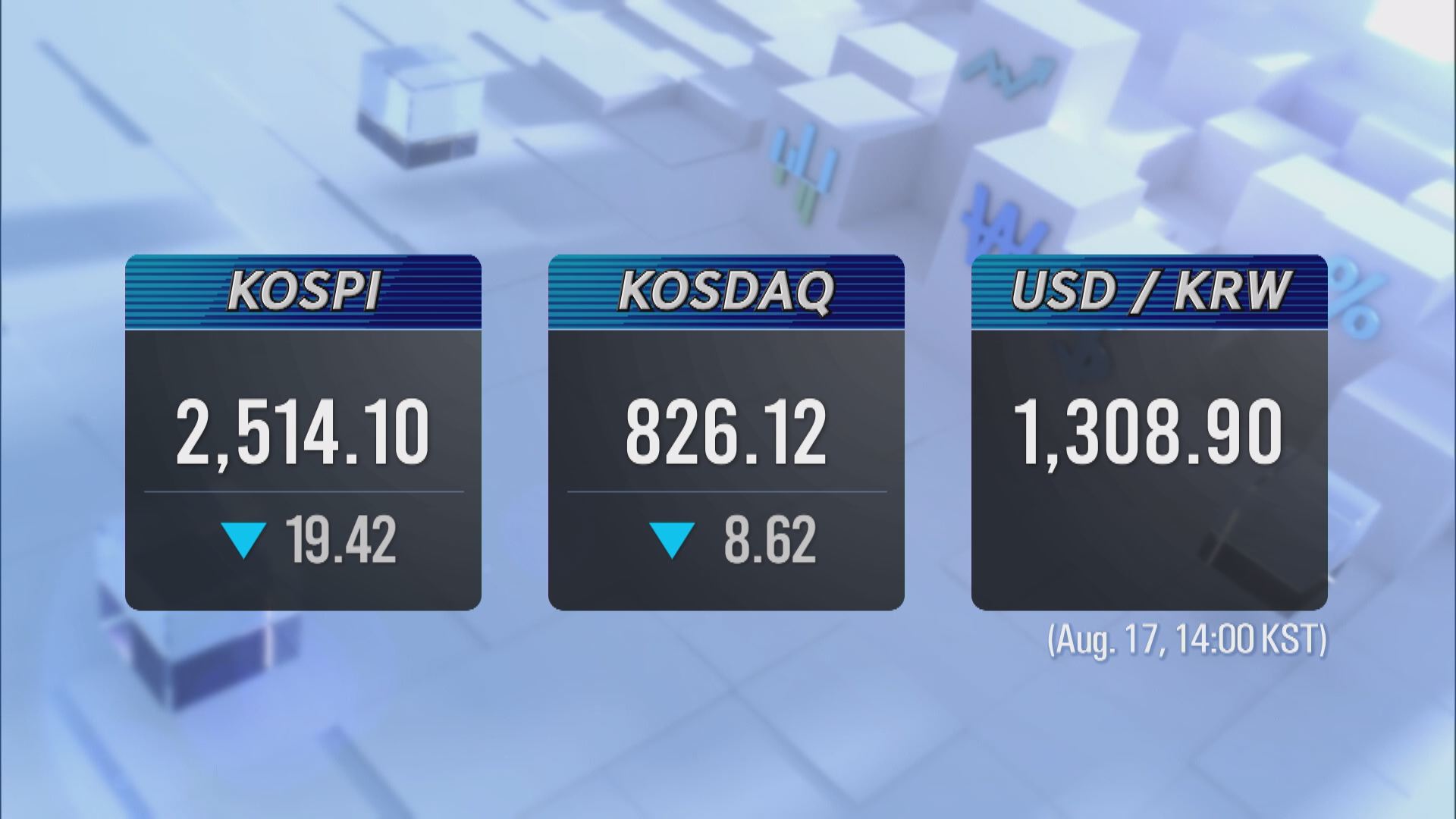DOMESTIC CARGO-HANDLING EQUIPMENT
입력 2022.08.17 (14:58)
수정 2022.08.17 (16:45)
읽어주기 기능은 크롬기반의
브라우저에서만 사용하실 수 있습니다.
[Anchor Lead]
Almost all of the cargo-handling equipment at Busan Port, the largest port in Korea, has been imported from China so far. Recently, domestically produced cargo-handling equipment, whose manufacturing had been suspended for more than a decade, has been installed at Busan New Port. Its economic impact is expected to be huge.
[Pkg]
Container cranes load and unload cargo to and from container vessels anchored at the terminal. They are high-tech cranes operated without human intervention. This world-leading technology has already been introduced at Rotterdam Port in the Netherlands and Long Beach Port in the U.S. This cargo-handling equipment was designed, manufactured, installed and tested by a Korean company.
[Soundbite] Park Jong-ho(Hyundai Infra Solutions) : "This smart crane is equipped with an automated unmanned platform, accident prevention and predictive maintenance devices and an eco-friendly power. Busan New Port is now able to beat its rivals in terms of global smart port equipment."
Busan Port had mainly used Chinese cargo-handling equipment because domestic manufacturing was relatively costly. There were no domestic container cranes at the port and only 16 percent of yard cranes were produced in Korea. But from now on cargo-handling equipment is to be localized. The goal is to secure source technology for cargo-handling equipment and market leadership in the development of core components. Some 300 billion won will be invested in the manufacturing of 55 domestic cranes over four years. The economic impact is expected to reach 800 billion won as well as 2,400 jobs being created.
[Soundbite] Min Byung-keun(Busan Port Authority) : "We have laid a foundation for competing in the global market, which reaches KRW 2 tn annually, by acquiring exclusive technologies and supply records."
Domestic cargo-handling equipment is to be installed and operated on a pilot basis within this year before its full operation is launched next year.
Almost all of the cargo-handling equipment at Busan Port, the largest port in Korea, has been imported from China so far. Recently, domestically produced cargo-handling equipment, whose manufacturing had been suspended for more than a decade, has been installed at Busan New Port. Its economic impact is expected to be huge.
[Pkg]
Container cranes load and unload cargo to and from container vessels anchored at the terminal. They are high-tech cranes operated without human intervention. This world-leading technology has already been introduced at Rotterdam Port in the Netherlands and Long Beach Port in the U.S. This cargo-handling equipment was designed, manufactured, installed and tested by a Korean company.
[Soundbite] Park Jong-ho(Hyundai Infra Solutions) : "This smart crane is equipped with an automated unmanned platform, accident prevention and predictive maintenance devices and an eco-friendly power. Busan New Port is now able to beat its rivals in terms of global smart port equipment."
Busan Port had mainly used Chinese cargo-handling equipment because domestic manufacturing was relatively costly. There were no domestic container cranes at the port and only 16 percent of yard cranes were produced in Korea. But from now on cargo-handling equipment is to be localized. The goal is to secure source technology for cargo-handling equipment and market leadership in the development of core components. Some 300 billion won will be invested in the manufacturing of 55 domestic cranes over four years. The economic impact is expected to reach 800 billion won as well as 2,400 jobs being created.
[Soundbite] Min Byung-keun(Busan Port Authority) : "We have laid a foundation for competing in the global market, which reaches KRW 2 tn annually, by acquiring exclusive technologies and supply records."
Domestic cargo-handling equipment is to be installed and operated on a pilot basis within this year before its full operation is launched next year.
■ 제보하기
▷ 카카오톡 : 'KBS제보' 검색, 채널 추가
▷ 전화 : 02-781-1234, 4444
▷ 이메일 : kbs1234@kbs.co.kr
▷ 유튜브, 네이버, 카카오에서도 KBS뉴스를 구독해주세요!
- DOMESTIC CARGO-HANDLING EQUIPMENT
-
- 입력 2022-08-17 14:58:05
- 수정2022-08-17 16:45:06

[Anchor Lead]
Almost all of the cargo-handling equipment at Busan Port, the largest port in Korea, has been imported from China so far. Recently, domestically produced cargo-handling equipment, whose manufacturing had been suspended for more than a decade, has been installed at Busan New Port. Its economic impact is expected to be huge.
[Pkg]
Container cranes load and unload cargo to and from container vessels anchored at the terminal. They are high-tech cranes operated without human intervention. This world-leading technology has already been introduced at Rotterdam Port in the Netherlands and Long Beach Port in the U.S. This cargo-handling equipment was designed, manufactured, installed and tested by a Korean company.
[Soundbite] Park Jong-ho(Hyundai Infra Solutions) : "This smart crane is equipped with an automated unmanned platform, accident prevention and predictive maintenance devices and an eco-friendly power. Busan New Port is now able to beat its rivals in terms of global smart port equipment."
Busan Port had mainly used Chinese cargo-handling equipment because domestic manufacturing was relatively costly. There were no domestic container cranes at the port and only 16 percent of yard cranes were produced in Korea. But from now on cargo-handling equipment is to be localized. The goal is to secure source technology for cargo-handling equipment and market leadership in the development of core components. Some 300 billion won will be invested in the manufacturing of 55 domestic cranes over four years. The economic impact is expected to reach 800 billion won as well as 2,400 jobs being created.
[Soundbite] Min Byung-keun(Busan Port Authority) : "We have laid a foundation for competing in the global market, which reaches KRW 2 tn annually, by acquiring exclusive technologies and supply records."
Domestic cargo-handling equipment is to be installed and operated on a pilot basis within this year before its full operation is launched next year.
Almost all of the cargo-handling equipment at Busan Port, the largest port in Korea, has been imported from China so far. Recently, domestically produced cargo-handling equipment, whose manufacturing had been suspended for more than a decade, has been installed at Busan New Port. Its economic impact is expected to be huge.
[Pkg]
Container cranes load and unload cargo to and from container vessels anchored at the terminal. They are high-tech cranes operated without human intervention. This world-leading technology has already been introduced at Rotterdam Port in the Netherlands and Long Beach Port in the U.S. This cargo-handling equipment was designed, manufactured, installed and tested by a Korean company.
[Soundbite] Park Jong-ho(Hyundai Infra Solutions) : "This smart crane is equipped with an automated unmanned platform, accident prevention and predictive maintenance devices and an eco-friendly power. Busan New Port is now able to beat its rivals in terms of global smart port equipment."
Busan Port had mainly used Chinese cargo-handling equipment because domestic manufacturing was relatively costly. There were no domestic container cranes at the port and only 16 percent of yard cranes were produced in Korea. But from now on cargo-handling equipment is to be localized. The goal is to secure source technology for cargo-handling equipment and market leadership in the development of core components. Some 300 billion won will be invested in the manufacturing of 55 domestic cranes over four years. The economic impact is expected to reach 800 billion won as well as 2,400 jobs being created.
[Soundbite] Min Byung-keun(Busan Port Authority) : "We have laid a foundation for competing in the global market, which reaches KRW 2 tn annually, by acquiring exclusive technologies and supply records."
Domestic cargo-handling equipment is to be installed and operated on a pilot basis within this year before its full operation is launched next year.
이 기사가 좋으셨다면
-
좋아요
0
-
응원해요
0
-
후속 원해요
0












![[단독] “윤석열·김용현 등 공모해 군사상 이익 해쳐”<br>…외환죄 대신 일반이적죄 적용](/data/layer/904/2025/07/20250714_3VTJV3.jpg)




이 기사에 대한 의견을 남겨주세요.